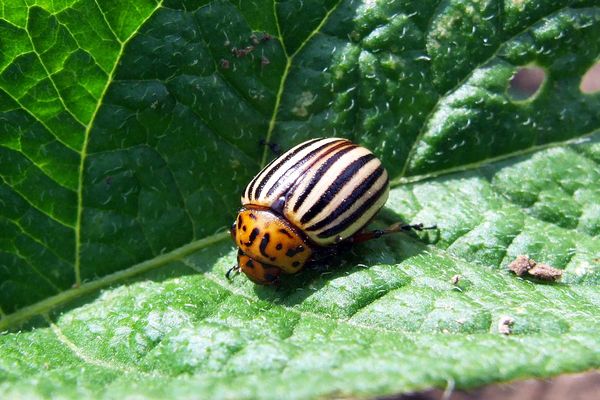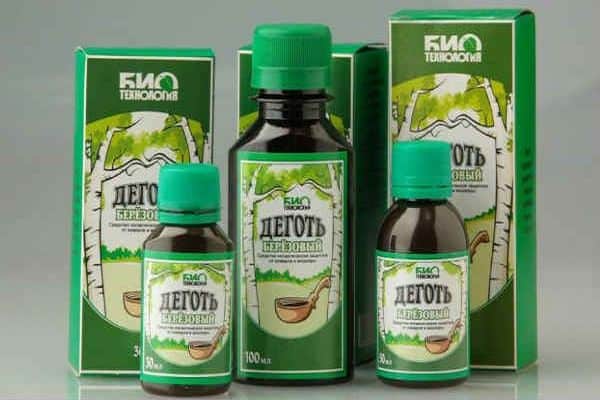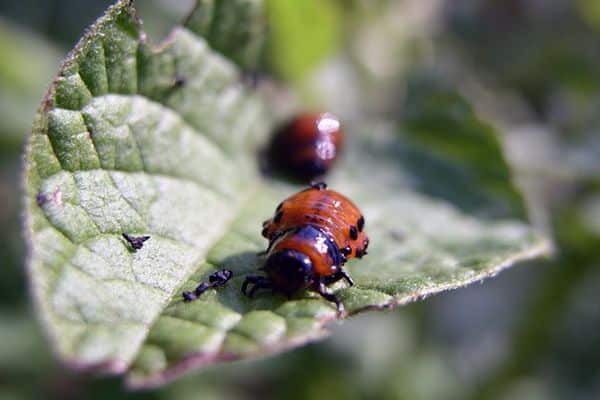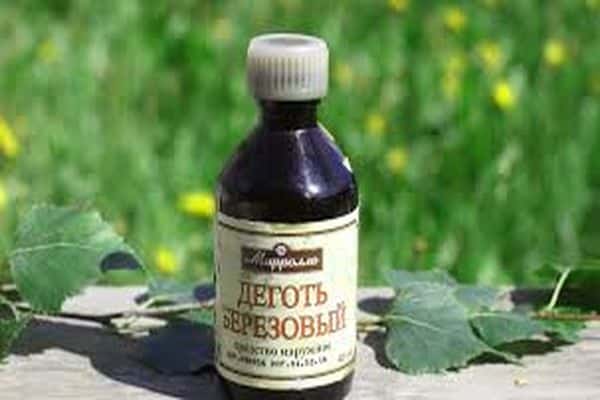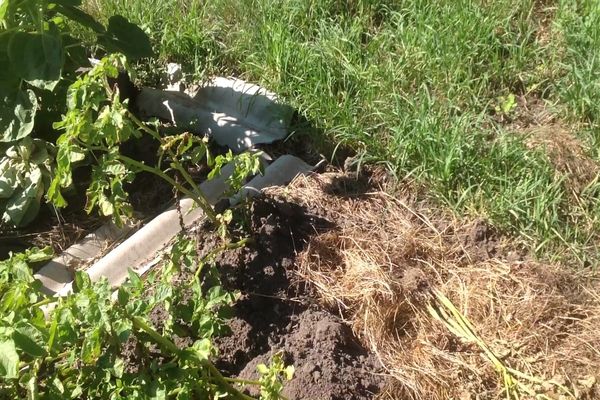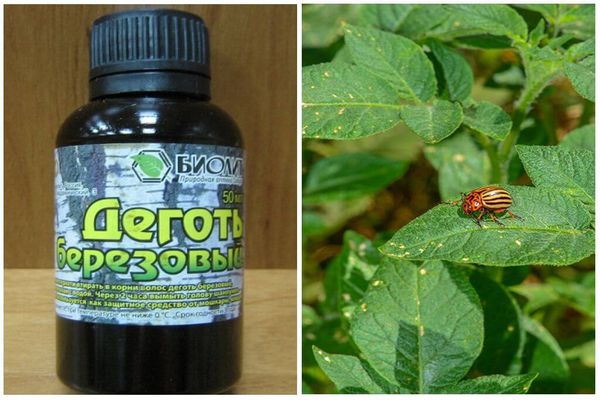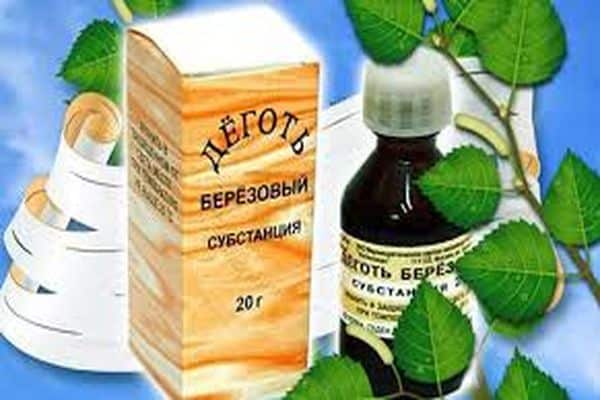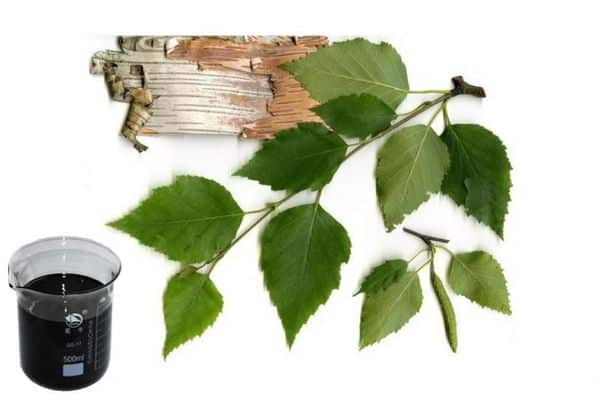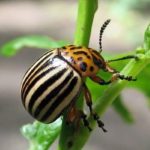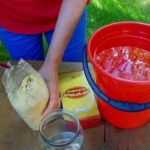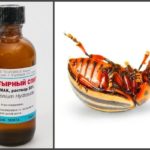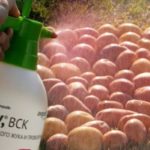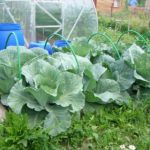Our distant ancestors grew vegetable and fruit crops for centuries, obtaining excellent harvests from them. Due to the fact that there were no chemicals then, they knew many environmentally friendly folk methods of getting rid of garden pests. In particular, birch tar was used against the Colorado potato beetle and other harmful insects.
- Composition of birch bark tar
- Properties of birch bark tar
- The principle of action on the Colorado potato beetle
- How do you get tar?
- How to prepare the product?
- Carrying out processing
- Before boarding
- After landing
- Use in the garden
- Potato
- Tomatoes
- Sorrel
- Use in the garden
- Apple tree
- Pear
- Plum
- Cherry
- Raspberries
- Control of other pests
- Cabbage fly
- Onion fly
- Cabbage butterfly
- Wireworm
- Various rodents
Composition of birch bark tar
It is a viscous oily liquid of black color with a blue-green tint. It has a specific, not very pleasant smell. It contains about 10,000 chemicals of organic origin in small quantities. Most of all phenols, toluene, xylene, guaiacol, organic acids, resins, and phytoncides were found in it.
Properties of birch bark tar
Due to its unique composition, birch tar has been famous since ancient times for its various beneficial properties. It is used in medicine as an insecticidal, antimicrobial, and antiseptic drug.
In cosmetology it is used to strengthen hair; shampoos and various masks are made from it. In the chemical industry - as raw materials for subsequent processing, in horticulture and gardening - for protection against pests.
The principle of action on the Colorado potato beetle
Gardeners and gardeners are constantly looking for such means to save the harvest and not get poisoned themselves. Most of them overlap and have the same effect on various insect pests. In particular, the tar extract turned out to be effective against the Colorado potato beetle.
The action of tar is based on the fact that it does not kill insects, but repels them with its pungent odor. The pest flies towards the scent of a potato leaf or other plant, but if the smell of the tops is interrupted by birch tar, then the beetle will not want to sit there.
How do you get tar?
It is extracted from the bark of a birch tree - birch bark. At the beginning of summer, during the period of sap flow, the birch bark moves well away from the main layer of bark. During this period, tar with better properties can be obtained. For this purpose, the dry distillation method is used. With this method, birch bark is heated to 600 degrees without access to oxygen.In industrial production, special equipment is used to extract tar.
You can also carry out the extraction procedure at home. But this process is long, and the output will be a small amount of the required liquid. The procedure is performed only outdoors to avoid fire and poisoning by resin vapors. A fire is built, metal dishes with holes and a tray are prepared into which the finished product will flow.
However, you can save your time and effort by purchasing a ready-made preparation from birch tar extract at the pharmacy.
How to prepare the product?
It is difficult to prepare a regular solution due to the fact that tar is poorly soluble in water. After mixing the ingredients, it is necessary to immediately carry out processing, without waiting for the substances to separate.
Second way:
- mix tar with laundry soap;
- then mix everything in water;
- quickly coat the plants with it.
Carrying out processing
The resulting liquid is oily, so the holes in the sprayer will become clogged and further processing will be impossible. Therefore, you need to use a broom. Dip it into the solution and lubricate the plant. In this case, the liquid is constantly stirred to prevent separation. If it does start, you will have to prepare the product again.
Before boarding
To obtain a good harvest, potato tubers are treated with a solution of birch tar. They are dipped in a product that contains 1 tbsp. a spoon of this product and 1 bucket of water.
When planting, the grooves are also treated. This provides additional protection for potato tubers from the Colorado potato beetle and wireworm.
After landing
The emulsion against the Colorado potato beetle is used at the sprouting stage and is reapplied every 3 days.Gardeners find the optimal proportion of ingredients themselves; in most cases it is 30 ml of birch tar per 1 bucket of water.
Processing is carried out in sunny weather. There is no need to treat plants before or directly during rain. Water will wash away the emulsion and there will be no effect from previous manipulations.
Use in the garden
Birch tar copes with a large number of garden and garden pests without the use of chemicals.
Potato
It repels the Colorado potato beetle well on potato, eggplant and pepper plantations. A solution of tar or birch soap is used, which is also effective against pests. The advantage of a soap solution is that it does not clog the spray bottle, which means the plants are processed faster.
Tomatoes
The Colorado potato beetle loves to eat the tender leaves and stems of tomatoes. The emulsion for spraying is prepared in the same way as a solution for potatoes. The following remedy will be effective: add 10 mg of tar and 50 g of laundry soap to 1 bucket of water, after which it is all thoroughly mixed.
Sorrel
It would seem that sorrel is sour, and pests should not be interested in it. But no, the sorrel leaf beetle loves it very much. This is a small green bug that eats holes as soon as the sorrel appears on the surface of the soil.
The plant must be treated immediately, otherwise the gardener may be left without this green crop. It is necessary to spray with the same solution as tomatoes.
Use in the garden
Birch tar is used not only to treat the garden, but also fruit and berry crops in the garden, and with the same effectiveness relieves gardeners from problems with insect pests.
Apple tree
The codling moth and hawthorn butterfly love to eat this tree. The caterpillars overwinter under the bark of the apple tree, and in the spring they turn into butterflies and lay eggs at the bottom of the leaves. The moths hatch and eat the apples, reducing the yield by up to 30%.
The control method is as follows: in late winter or early spring, the tree is sprayed with a solution prepared from 1 tbsp. fly in the ointment, 40 g of laundry soap and 10 liters of water. Also treat the soil under the apple tree with the prepared liquid.
Hawthorn works in much the same way as the codling moth. It is located in the leaves, which are wrapped in cobwebs. These nests are removed, then the apple tree and the ground under it are treated in the same way.
Pear
Only hawthorn loves this tree. The measures to destroy the pest are similar to those described above. If a tree is affected by scab, it is sprayed when the leaves first appear. After a week, the procedure must be repeated.
Plum
The same moths and hawthorns love it. The methods of struggle are the same as those indicated above.
Cherry
In addition to the codling moth and hawthorn, the bird cherry weevil likes to feast on plums. This is a gray beetle, 5 mm long. It eats not only leaves, but also ovaries, inflorescences, buds, and fruits. As soon as the first leaves sprout, the tree is treated in the same way as other trees.
Spray again after flowering, when setting the first fruits.
Raspberries
Strawberry-raspberry weevils and spider mites can damage bushes. They overwinter under fallen leaves. Raspberries are processed until the ovaries appear.
Control of other pests
In addition to the above pests of garden crops, plants can also be damaged by some other types of insects, as well as rodents.
Cabbage fly
To protect against this pest, sawdust is processed, which is then used to mulch the soil. Ingredients: 1 tbsp. fly in the ointment for 1 bucket of water. Leave for 2 hours.
Onion fly
To prevent fly attacks on onion sets, they are treated before planting. Place 1 kg of onions in a plastic bag and add 1 tbsp. fly in the ointment.
If the onion is already planted, it is processed from above when sprouts appear. To do this, prepare a solution of 1 tbsp. fly in the ointment, 30 g of laundry soap, 10 liters of water. After 2 weeks, the procedure is repeated.
Cabbage butterfly
Damages cabbage beds. If you place pegs with rags treated with tar solution along the cabbage rows, this will scare away the cabbage butterflies.
Wireworm
Harmful to root crops. Eliminating it is not difficult. Before planting, tubers are treated in an emulsion solution: 1 fly in the ointment for 1 bucket of water. Keep in solution for about 1 hour. If potatoes are sown, the soil is treated with the prepared product.
Various rodents
Trees suffer not only from insect pests, but also from various rodents. To protect against them, sawdust is treated with a tar solution and used as mulch. The procedure is carried out until autumn.
A means of protecting against hares is whitewashing trees. For the solution, take: 1 kg of slaked lime, 10 kg of mullein, 50 mg of tar. The mixture is brought to the consistency required for whitewashing with water.
The use of birch tar against the Colorado potato beetle and other pests is safe for humans and animals. The solution, with its unpleasant odor, drives pests away from green spaces and prevents them from settling there again.

